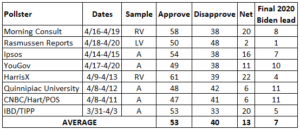In his New York Times column, Thomas B. Edsall probes the psychology of Trumpism that still rules Republican Party messaging and writes, “In a separate article, “The power of Trump-speak: populist crisis narratives and ontological security,” [Alexandra] Homolar and Ronny Scholz, a project manager at the University of Warwick’s center for applied linguistics, argued that Trump’s “leadership legitimation claims rest significantly upon ‘crisis talk’ that puts his audience in a loss frame with nothing to lose.” These stories serve a twofold purpose, instilling “insecurity among the American public” while simultaneously transforming “their anxiety into confidence that the narrator’s policy agendas are the route back to ‘normality.’”….At the heart of what the authors call “Trump-speak” is a “politics of reassurance, which relies upon a threefold rhetorical strategy: it tells audiences what is wrong with the current state of affairs; it identifies the political agents that are responsible for putting individuals and the country in a state of loss and crisis; and it offers an abstract pathway through which people can restore past greatness by opting for a high-risk outsider candidate”…..Once an audience is under Trump’s spell, Homolar and Scholz write: “Rational arguments or detailed policy proposals pale in comparison with the emotive pull and self-affirmation of an us-versus-them crisis narrative, which creates a cognitive feedback loop between individuals’ ontological insecurity, their preferences for restorative policy, and strongmen candidate options. In short, “Trumpspeak” relies on creating the very ontological insecurity that it promises to eradicate for political gain.”….The authors describe “ontological security” as “having a sense of presence in the world, describing such a person as a ‘real, alive, whole, and, in a temporal sense, a continuous person,’” citing R.D. Laing, the author of “The Divided Self.” Being ontologically secure, they continue, “allows us to ‘encounter all the hazards of life, social, ethical, spiritual, biological’ with a firm sense of both our own and others’ reality and identity. However, ontological security only prevails in the absence of anxiety and danger.”
Looking toward the next step in reducing violence in law enforcement, James D. Walsh writes in “The Most Powerful Weapon for Police Reform Is Back” in New York Magazine “On the heels of Derek Chauvin’s murder conviction, Attorney General Merrick Garland announced that the Justice Department is launching a “pattern or practice” investigation into the Minneapolis Police Department. Pattern or practice probes are often a precursor to court enforced reform agreements between the DOJ and local law enforcement agencies, which require them to comply with a list of goals before federal oversight can be lifted. A court-appointed monitor, usually a DOJ attorney in its civil rights division, is responsible for overseeing the goals and evaluating the department’s progress. President Joe Biden campaigned on a promise to revive pattern-or-practice investigations – as well as subsequent reform agreements – after the Trump administration suspended the program in 2017….Congress first gave the Justice Department the power to enter reform agreements in the 1994 crime bill drafted by Biden following civic unrest in Los Angeles two years earlier over the LAPD beating of Rodney King. Many police accountability experts say the reform agreements – both consent decrees and settlement agreements – are the most effective way to achieve long-term police reform.”
In terms of new police reform legislation, “Here’s what the George Floyd Justice in Policing Act would do” by Henry J. Gomez of NBC News provides a useful summary of the proposal: “The bill aims to end certain police techniques, including chokeholds and carotid holds, two forms of potentially deadly force. Such practices would be banned at the federal level, and federal funding for local and state police agencies would be conditioned on those agencies outlawing them. The bill also seeks to improve police training and invest in community programs designed to improve policing and promote equitable new policies….Other provisions in the bill would:
- Ban no-knock warrants in federal drug cases and, as with chokeholds, encourage local and state agencies to comply by tying bans to federal funding. A no-knock warrant led to the fatal shooting of 26-year-old Breonna Taylor by police last year in Louisville, Kentucky.
- End “qualified immunity,” which protects law enforcement officers from most civil lawsuits.
- Make it easier to prosecute police officers accused of misconduct by lowering the legal standard from willfulness to recklessness.
- Prohibit racial, religious and discriminatory profiling by law enforcement agencies at the local, state and federal levels and mandate training against such discriminatory profiling.
- Require local and state police agencies to use existing federal funds to ensure the use of body cameras, require all federal uniformed officers to wear body cameras, and require all marked federal police vehicles to use dashboard cameras.
- Create a national police misconduct registry to prevent police officers who are fired or pushed out for bad performance from being hired by other agencies.
- Use federal grants to help communities establish commissions and task forces to study police reforms.
- Address police militarization by limiting how much military-grade equipment is awarded to state and local law enforcement agencies.
- Enhance “pattern and practice” investigations of police departments by granting the Justice Department subpoena power and establishing grant programs for state attorneys general to conduct their own probes.”
From “Checking in on Biden’s Approval Rating as Hundred Days’ Mark Nears: Steady on average, but individual pollsters vary greatly” by Kyle Kondik at Sabato’s Crystal Ball: “Biden’s actual level of popularity matters greatly for the 2022 midterm. If his approval rating eventually turns negative, the Democrats will be hard-pressed to hold their narrow edges in the Senate and especially the House. If Biden’s approval stays positive, Democrats might have a chance to buck the usual midterm penalty that is often inflicted on the presidential party. But the degree to which Biden is popular or unpopular likely matters too. We’ll see if individual pollsters come more into alignment on this as time goes on.” Kondik’s chart:




